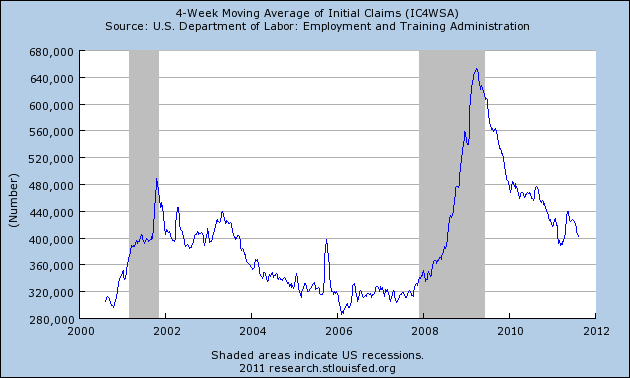Article • Dean Baker’s Beat the Press
Fact-based, data-driven research and analysis to advance democratic debate on vital issues shaping people’s lives.
Center for Economic and Policy Research
1611 Connecticut Ave. NW
Suite 400
Washington, DC 20009
Tel: 202-293-5380
Fax: 202-588-1356
https://cepr.net
The NYT told readers that the Fed will be reluctant to engage in more quantitative easing or take other steps to boost the economy because it is worried about inflation. It then told readers that inflation has been 3.6 percent over the last year, implying that this is a serious problem.
Actually, as a matter of policy the Fed has long focused on the core inflation rate, which excludes food and energy prices. Over the last 12 months, the core inflation rate has been just 1.8 percent, which is below its 2.0 percent target. Furthermore, in prior years the Fed had not even viewed the 2.0 percent core rate as a strict bound. The year over year inflation rate was consistently above 2.0 percent in two decades prior to the recent recession, with the exception of a period in 2003-2004 when the weak economy pushed inflation below this rate. In other words, if Bernanke and the Fed now view 2.0 percent core inflation as an upper bound, then this is a much stricter anti-inflation policy than they have applied in the past.

Furthermore, higher inflation is actually one of the goals of a quantitative easing policy. Higher inflation reduces the real interest rate. Firms are more likely to invest if they expect that they can sell the goods that they produce at a higher price in future years. This is why Bernanke actuallyadvocated that the Bank of Japan deliberately target a higher inflation rate in a paper that he wrote while he was still a professor at Princeton.
This is also the reason that deflation can be a problem as the article notes. However, there is no magic to zero. The problem of deflation is that the the inflation rate is lower than is desired. If the desired inflation rate is 4.0 percent, then the drop of the inflation rate from 0.5 to -0.5 percent is no worse than the drop from 1.5 percent to 0.5 percent. Deflation per se is only a problem when the rate of price decline is so rapid that it undermines the ability to plan. This was the case at the start of the Great Depression when prices were declining at a near double-digit annual rate.